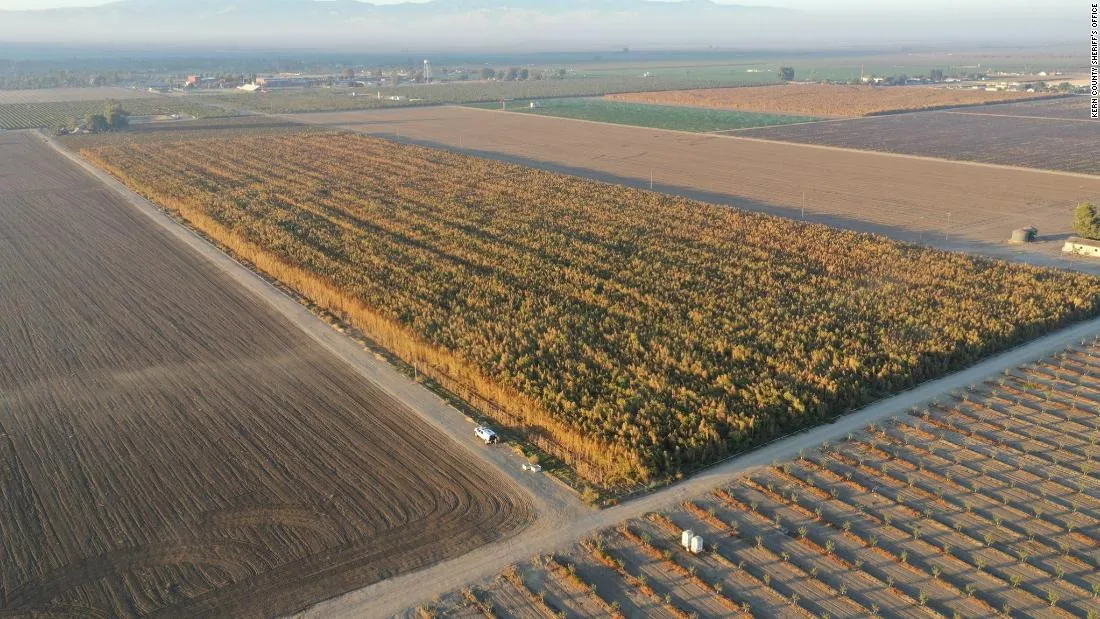
A massive $ 1 billion cannabis bust has just collapsed in Los Angeles County
Picture over
This could be the largest cannabis bust in Los Angeles County’s history.
Los Angeles Sheriff’s Department officials said on Wednesday that they seized $ 1 billion of marijuana in a 10-day operation last month that confiscated 373,000 unlicensed cannabis plants and 33,480 pounds of already harvested weed.
The bust follows a raid last month on farms in the Mohave Desert that police say were under the control of drug cartels and that arrested 23 people. The indictments included 22 crimes, 109 misdemeanors and 19 charges by NBC “Water Theft Enforcement Teams”. (Operators of illegal cultivation areas are often accused of the illegal use of water resources.)
above
The bankruptcy comes at a time when California is trying to reckon with illegal cannabis deals that continue to flourish nearly five years after Prop. 64 was approved by voters in November 2016.
Some attribute the thriving unlicensed industry to the high taxes levied in the state on legal cannabis products.
The Golden State’s unlicensed crop industry is so massive that it remains the main supplier of illegal weed to other states. A report in the Chicago Sun Times last month estimated that most of the $ 1.7 billion worth of unlicensed cannabis sold in Illinois came from California.
California MP Mike Garcia in the US House of Representatives on Tuesday outlined what he believes is cause for concern, the Santa Rosa Press Democrat reported. The situation, as Garcia describes, appears to be a combination of environmental and human rights disasters that have worsened during the coronavirus pandemic.
“I’ve seen hundreds, if not thousands, of these illegal tree nurseries in our desert, mostly occupied by illegal immigrants,” he said. “Over 90% of the people who work on these farms are tied servants in some form or another. They steal our water, in many cases they sit on our land. ”
“Let me be very clear that these are not mom-and-pop or legal operations that we are fighting,” he continued. “These are large-scale illegal operations that are in many cases run by several different cartels right here in our backyard.”
Officials say the 10-day bust shut down 205 illegal growing areas in the desert, but that about 500 were documented when the air was monitored by air.
But okay. We understand that these illegal deals are undercutting the legal industry, creating a difficult time for police officers and federal agencies, and potentially unsustainable working conditions for migrants. But make no mistake: things would be drastic different if it weren’t for such a massive barrier to entry into the California legal industry. The word “cartel” is also a catchphrase that police officers and politicians like to throw around with. It’s a fancy term to refer to a team of dealers working together to sell drugs, and in this case, weed. The chances are good that many “cartels” – whether in the desert or in Humboldt – are led and operated by people who could not afford a license. So in the end it is up to the state because they are making unsustainable laws and doing nothing to fix them.
Reports of US-produced cannabis for the illegal market appear to be in line with government investigations into where our drugs come from. A DEA report released in March said the agency was seizing about 80 percent less cannabis at the U.S.-Mexico border compared to 2013.
The same report lamented the challenges of legalization, highlighting the difficulty of arresting unlicensed cannabis and its dealers. Legalizing CBD and tightening the rules for likely causes for the drug police have made it a little harder to destroy people for their trees.

Post a comment: